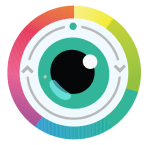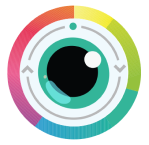
You may feel overwhelmed when presented with a prescription sheet teeming with numbers, symbols, and abbreviations can be overwhelming. Learning how to read contact prescription is akin to deciphering a foreign language for many.
However, with the right guidance, this seemingly complex code can be unraveled with ease.
From understanding the basic terms, like OD and OS, to grasping the significance of Power, Base Curve, and other specific terms, we'll provide a comprehensive overview to equip you with the knowledge you need.
Without further ado, let's learn how to read a contact prescription.
What this article covers:- How to Read Your Contact Lens Prescription
- Contact Lens Prescription Example
- Contact Prescription FAQ
How to Read Your Contact Lens Prescription
Understanding your contact lens prescription is crucial for clarity. For example, the difference between prescription glasses and contacts lies in their design and proximity to the eye, making their prescriptions non-interchangeable.
Here's a step-by-step guide to help you decode your prescription:
What The Prescription Terms And Abbreviations Mean
Our research indicates that with the rise of various contact brands like Dailies lenses, contacts Biofinity, Acuvue lens, and Clariti 1 Day, it's important to grasp prescription terms to ensure you choose the right product for your needs:
OD and OS: At the very beginning of your prescription, you'll notice the abbreviations "OD" and "OS." These are Latin terms - "Oculus Dexter" for OD and "Oculus Sinister" for OS. In simpler terms, OD refers to your right eye and OS to your left.
It's essential to differentiate between the two because, often, each eye has unique requirements.
Power/Sphere (PWR/SPH): This is one of the most critical components of your prescription. The Power or Sphere indicates the strength of correction your eyes need. If you see a negative value, it means you're nearsighted (myopic) - you can see objects close to you clearly but struggle with distant objects. Conversely, a positive value suggests you're farsighted (hyperopic), meaning you can see distant objects clearly but have difficulty with close-up tasks.
Base Curve (BC): The base curve determines how the contact lens will fit on the curvature of your eye. Everyone's eyes are shaped slightly differently, and the BC ensures that your contact lens sits comfortably on your eye, minimizing the risk of irritation or displacement.
A lens with the wrong base curve can lead to discomfort among other issues.
Diameter (DIA): The diameter is straightforward - it's the size of the contact lens. It's vital that the lens covers your cornea (the clear front surface of your eye) entirely without being too large or too small.
An incorrect diameter can lead to the lens moving around or not covering the necessary area, affecting vision clarity.
Terms And Abbreviations for Astigmatism
Unlike simple nearsightedness or farsightedness, astigmatism involves an irregular curvature of the eye's lens or cornea. Based on our observations, this irregularity causes the formation of two images that clash which leads to a distorted, blurry image.
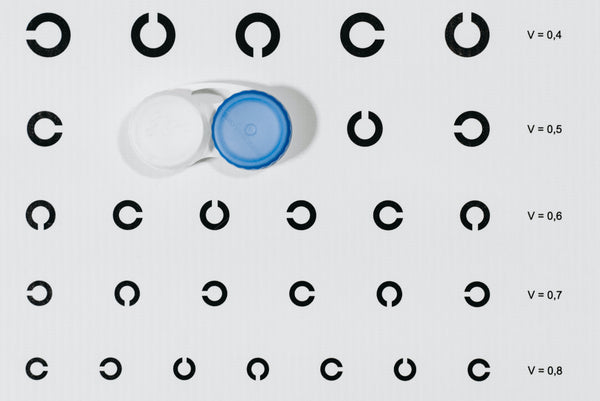
This is why many contact lens brands have developed specialized daily disposable contact lenses and tinted contact lenses to cater to those with astigmatism.
To correct this condition, specific terms and measurements are used in prescriptions.
Cylinder (CYL): Indicates the lens power required for astigmatism correction, with negative values for nearsighted astigmatism (blurred distant vision) and positive values for farsighted astigmatism (blurred close-up vision).
Axis: Provides the angle for lens power application in astigmatism prescriptions, ranging from 0 to 180 degrees, where 90 degrees is vertical correction and 180 degrees is horizontal, with other values denoting specific angles of correction.
Terms And Abbreviations For Presbyopia
Presbyopia is a condition that affects a significant portion of the population. As we age, the lens inside our eyes gradually loses its elasticity and with it the ability to focus from distant to near objects.
Add: Our findings show that as we age, many of us develop presbyopia. For those affected, the "Add" value on a prescription indicates the additional magnification required in multifocal lenses, allowing the wearer to see both near and far clearly.
Contact Lens Prescription Example
Let's look at a sample contacts prescription:
Prescription
Right Eye (OD): -2.50 -1.25 x 180 +2.00
Left Eye (OS): -3.00 -1.50 x 175 +2.50
What It Means
Nearsightedness: The first numbers (-2.50 for the right eye and -3.00 for the left) tell us the person is nearsighted. They can see things up close but might find distant objects blurry. The left eye needs a bit more correction than the right.
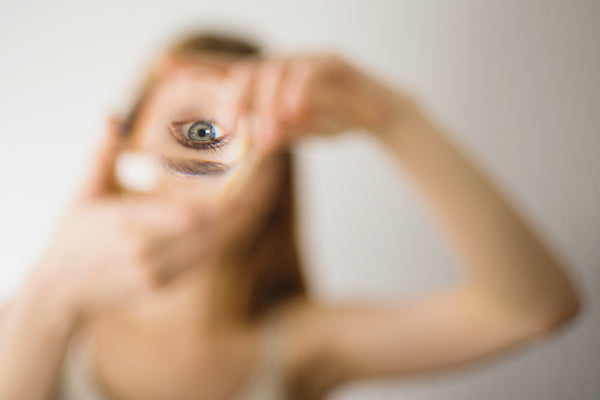
Astigmatism: The next set of numbers (-1.25 and -1.50) and the values after "x" (180 and 175) are about astigmatism. This means the eyes aren't perfectly round, causing some distortion in vision. The numbers after "x" show the direction of the correction.
Reading Help: The last numbers (+2.00 and +2.50) are for presbyopia. As we age, reading up close can get tricky. These numbers show how much extra help is needed for close-up tasks, like reading. The left eye needs more help than the right.
Contact Prescription FAQ
Can I use my eyeglass prescription for contacts?
No, you can't. While both eyeglass and contact lens prescriptions aim to correct vision, they are not interchangeable.
The primary reason is the difference in proximity: eyeglasses sit a short distance away from your eyes, while contact lenses, including popular options like Air Optix colors contact lenses and other contact lenses monthly, rest directly on the surface of your eyes.
This difference in placement means the measurements and values required for optimal vision correction will vary between the two. Using an eyeglass prescription for contacts could lead to discomfort, blurred vision, or even potential eye health issues.
How often should I update my prescription?
Typically, a contact lens prescription is valid for one year, but it's crucial to know how long does a contacts prescription last to ensure you're wearing lenses with the most up-to-date specifications.
Regular eye exams ensure that any changes in your vision or eye health are detected early. You can even renew your prescription with our online eye exam!
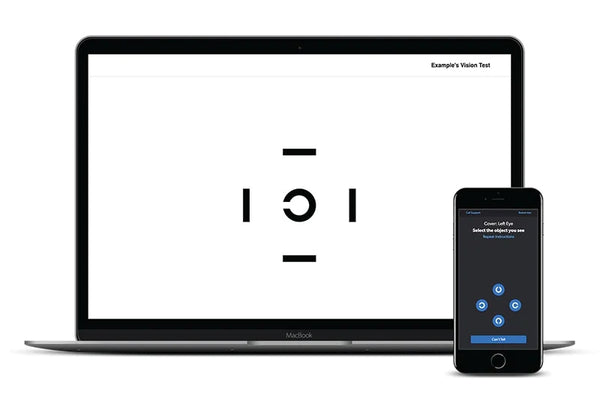
However, this can vary based on individual needs, age, and eye health. Some people might need more frequent check-ups, while others might be advised to come in every two years.
Why are there two power values on my prescription?
If your prescription has two power values, it often indicates the presence of a condition like astigmatism or presbyopia. The two values represent the power needed to correct your primary vision (nearsightedness or farsightedness) and the additional power to correct astigmatism.
On the other hand, in the case of presbyopia, the two values represent the power needed for distance and the additional power for near vision.
Is It Safe To Wear Color Contacts Over Prescription Lenses?
Is it safe to wear colored contacts over prescription contacts? No, it's not recommended to wear colored contacts over prescription lenses.
Layering lenses can increase the risk of eye damage and discomfort. If you're interested in colored contacts and need vision correction, consider prescription colored lenses. We offer an extensive range of color contacts, including Freshlook colorblends and Acuvue lenses.
Conclusion
With the right understanding of the different terms and abbreviations, you can easily decode your contact lens prescription and ensure you're making the best choices for your eyes.
At Fresh Lens, we're committed to providing you with top-quality products and an unparalleled shopping experience.
Interested? Browse our products and discover the perfect fit for your vision!
If you want to learn more, why not check out these articles below:
- Can You Wear Contacts and Prescription Sunglasses at the Same Time
- Can I Order a Different Brand of Contact Lenses Than My Doctor Prescribed
- How Is a Person's Prescription Made Into a Contact Lens
- All-Around Best Contact Lenses
- Best Color Contact Lenses
- Most Comfortable Contact Lenses
- Best Multifocal Contact Lenses
- How to Remove Contact Lenses
- How to Remove Contact Lenses with Long Nails
- Does Contact Solution Help with Red Eyes?
- Does Contact Lens Solution Expire?
- How Long Can Contact Lenses Stay in Solution?
- Can You Flush Your Eyes with Contact Solution?
- Best Contacts for Dry Eyes
- Can Dry Eyes Cause Blurry Vision with Contacts?
